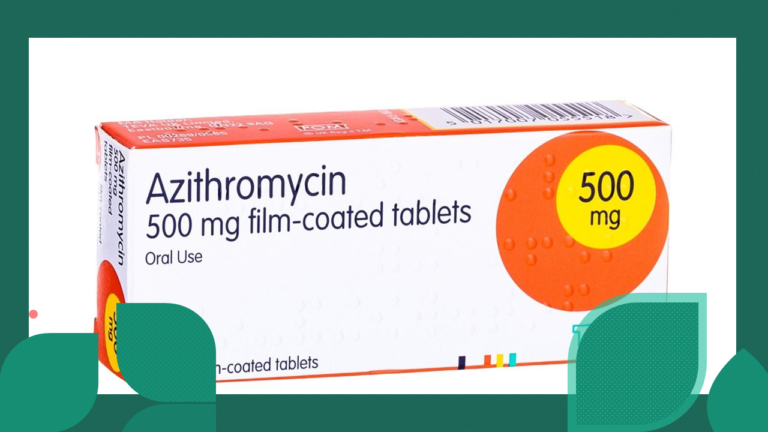
Azithromycin (Zithromax) is a macrolide antibiotic that works as a bacteriostatic or bactericidal in susceptible bacteria.
Drug Class
Macrolide antibiotic
Therapeutic Actions
Bacteriostatic or bactericidal in susceptible bacteria.
Indications
- Treatment of LRIs(Lower Respiratory Infections): Acute bacterial exacerbations of COPD due to H. influenzae, Moraxella catarrhalis, S. pneumoniae; community-acquired pneumonia due to S. pneumoniae, H. influenzae
- Treatment of LRIs: Streptococcal pharyngitis and tonsillitis due to Streptococcus pyogenes in those who cannot take penicillins
- Treatment of uncomplicated skin infections due to Staphylococcus aureus, S. pyogenes, Streptococcus agalactiae
- Treatment of nongonococcal urethritis and cervicitis due to C. trachomatis; treatment of PID
- Treatment of acute sinusitis
- Treatment of otitis media caused by H. influenzae, M. catarrhalis, S. pneumoniae in children > 6 mo
- Treatment of pharyngitis and tonsillitis in children > 2 yr who cannot use first-line therapy
- Prevention and treatment of disseminated Mycobacterium avium complex (MAC) in patients with advanced AIDS
- Unlabeled uses: Uncomplicated gonococcal infections caused by N. gonorrhoeae; gonococcal pharyngitis caused by N. gonorrhoeae; chlamydial infections caused by C. trachomatis; prophylaxis after a sexual attack.
Contraindications and cautions
- Contraindicated with hypersensitivity to azithromycin, erythromycin, or any macrolide antibiotic.
- Use cautiously with gonorrhea or syphilis, pseudomembranous colitis, hepatic or renal impairment, lactation.
Available forms
Tablets—250, 600 mg; powder for injection—500 mg; powder for oral suspension—100 mg/5 mL, 200 mg/5 mL, 1 g/packet
Dosages
ADULTS
- Mild to moderate acute bacterial exacerbations of COPD, pneumonia, pharyngitis, and tonsillitis (as second-line): 500 mg PO single dose on the first day, followed by 250 mg PO daily on days 2–5 for a total dose of 1.5 g or 500 mg/day PO for 3 days.
- Nongonococcal urethritis and cervicitis due to C. trachomati: A single 1-g PO dose.
- Gonococcal urethritis and cervicitis: A single dose of 2 g PO.
- Disseminated MAC infections: For prevention, 1,200 mg PO taken once weekly. For treatment, 600 mg/day PO with etambutol.
- Acute sinusitis: 500 mg/day PO for 3 days.
PEDIATRIC PATIENTS
- Otitis media: Initially, 10 mg/kg PO as a single dose, then 5 mg/kg on days 2–5 or 30 mg/kg PO as a single dose.
- Community-acquired pneumonia: 10 mg/kg PO as a single dose on first day, then 5 mg/kg PO on days 2–5.
- Pharyngitis or tonsillitis: 12 mg/kg/day PO on days 1–5.
- Acute sinusitis: 10 mg/kg/day PO for 3 days.
Adverse effects
- CNS: Dizziness, headache, vertigo, somnolence, fatigue
- GI: Diarrhea, abdominal pain, nausea, dyspepsia, flatulence, vomiting, melena, pseudomembranous colitis
- Other: Superinfections, angioedema, rash, photosensitivity, vaginitis
Patient education
- Take the full course prescribed. Do not take with antacids. Take with food if GI upset occurs.
- You may experience these side effects: Stomach cramping, discomfort, diarrhea; fatigue, headache (medication may help); additional infections in the mouth or vagina (consult with a health care provider for treatment).
- Report severe or watery diarrhoea, severe nausea or vomiting, rash or itching, mouth sores, vaginal sores.
- Educate patient to take the drug on an empty stomach 1 hr before or 2–3 hr after meals. Food affects the absorption of this drug.